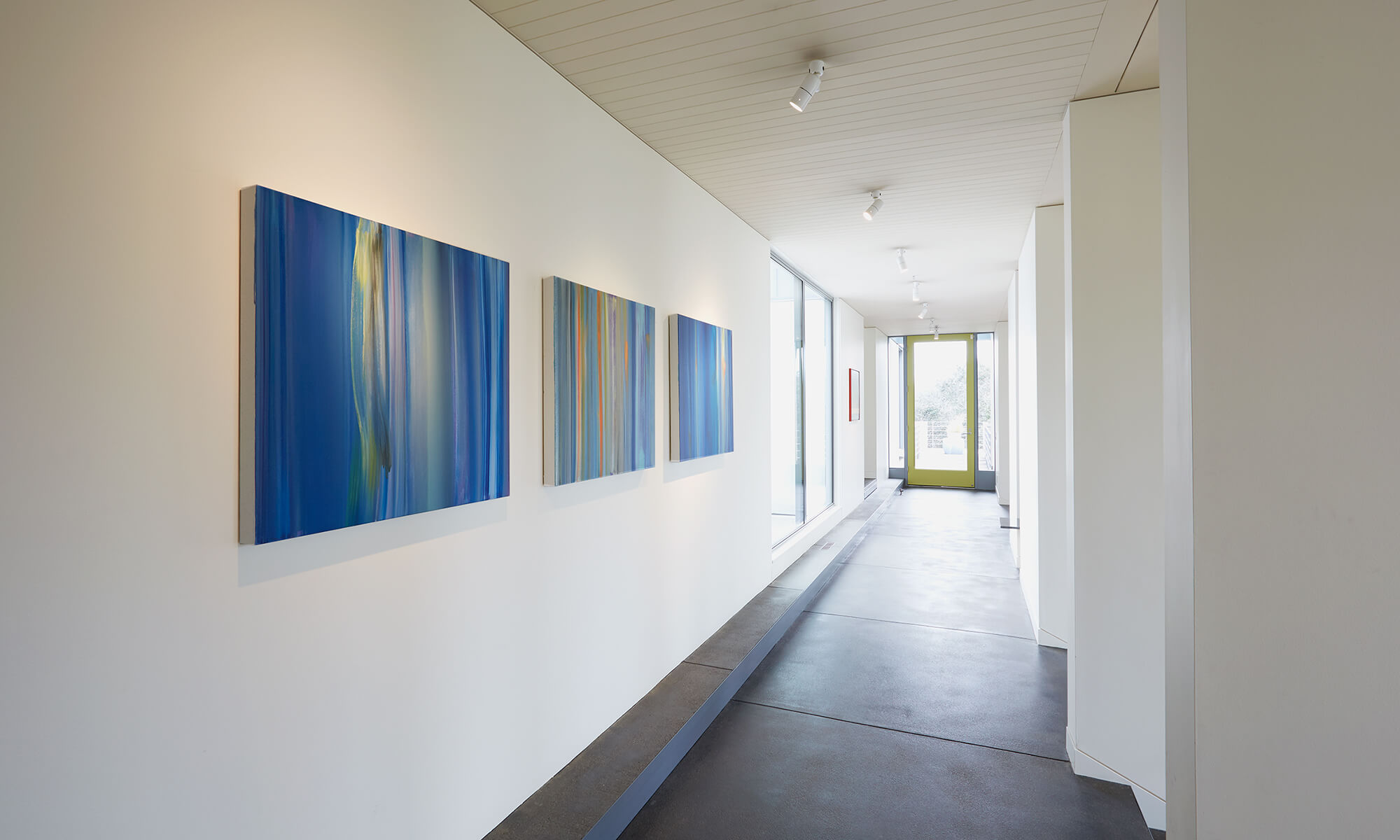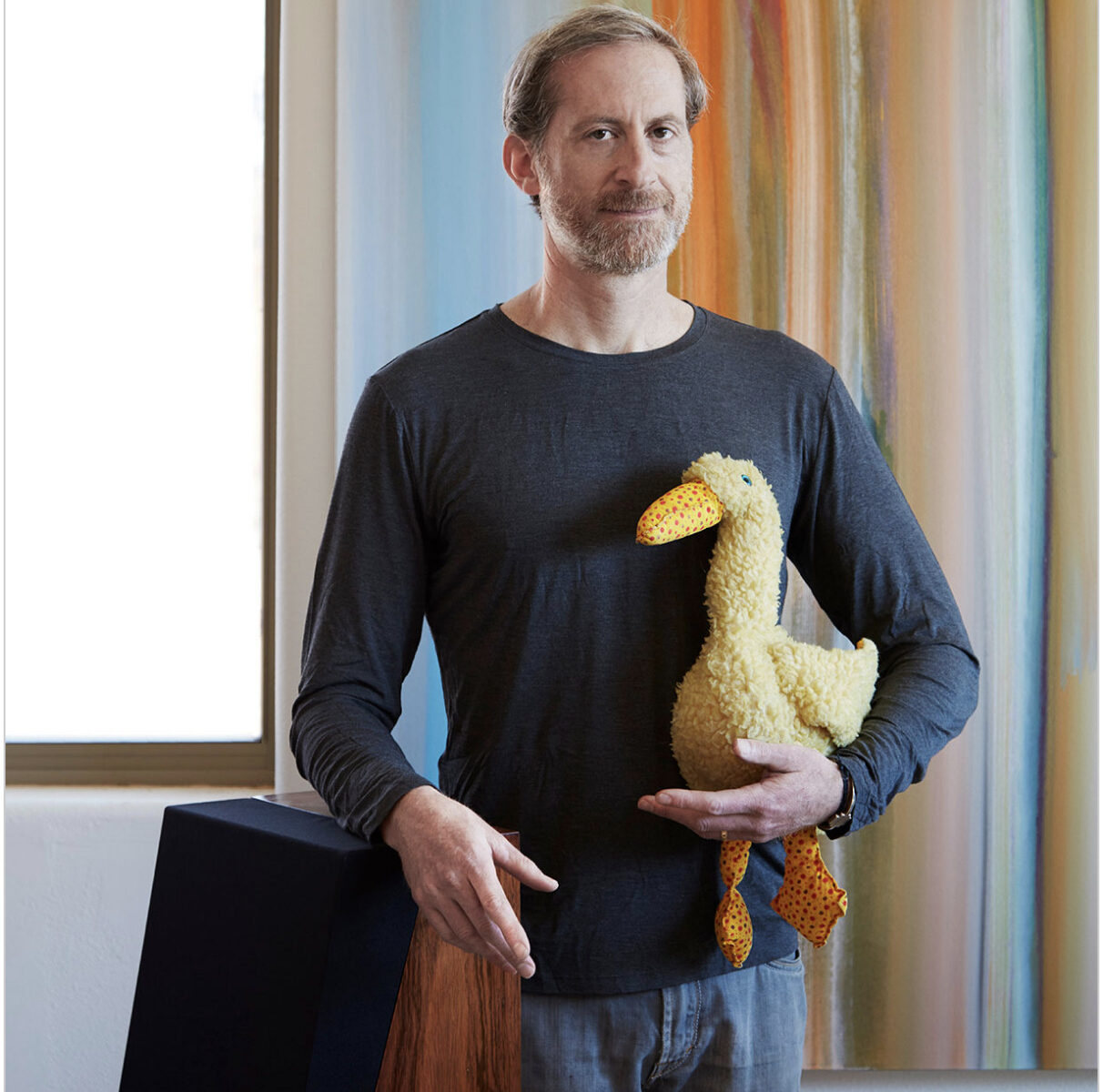From “A Portrait of the Artist”, a series of interviews and photographic portraits inspired by the paintings of Agnolo Bronzino, (1503-1572), Italian Mannerist painter in the court of the Medici.
This project traversed decades, as photographer Jen Fong captures artists and designers in their familiar studio setting, with a twist: Fong playfully conjures Bronzino’s depth using camera, lens and light.
Willy Richardson’s luminous body of work is a stellar example of setting parameters, which, instead of being a confine, allows him to discover the freedom and spontaneity that can occur within a constant. He applies paint vertically only. It’s like a language, and what we read is the entire painting as a finished work. Is it a word, a short story or an entire novel?Portrait of the Artist, by Jen Fong
Hi Willy, the subjects in my photos, and in Bronzino’s paintings, are usually holding something of significance; What’s with the Duck?
Our collaborative goal was a Bronzino subject in our modern world. I posed as myself, yet perhaps from the 16th century, and possibly a member of the Medici family. So we have a young aristocratic man, who lived through the Covid pandemic. In Italy, the parallel was the bubonic plague outbreak. The subject is tight lipped but with an awareness of the fragility of life. Portraits during the 16th century were painted with rich symbolism, so any object in the painting told us something meaningful about the sitter.
“Duckie” was one of my stuffies from infancy through childhood. He was with me when I crossed the bridge into the world of language, symbolism and abstraction.
We met in New York City in the late 90’s. You were born in Santa Fe. What brought you back?
Those 15 years away from Santa Fe brought many adventures, but I had a feeling once I returned, I’d settle in possibly for the rest of my life. So I did my best to live many lives before returning.
Santa Fe is a place to sift and sort through ideas. It’s a great place to focus, study and learn. Giant thunderclouds roll in over the foothills, and the animals, rivers, farmers and skiers jump for joy. We cherish water here. Simple things like rain and snow are exciting. It’s the perfect place to have a family and make art, and that’s why I returned.
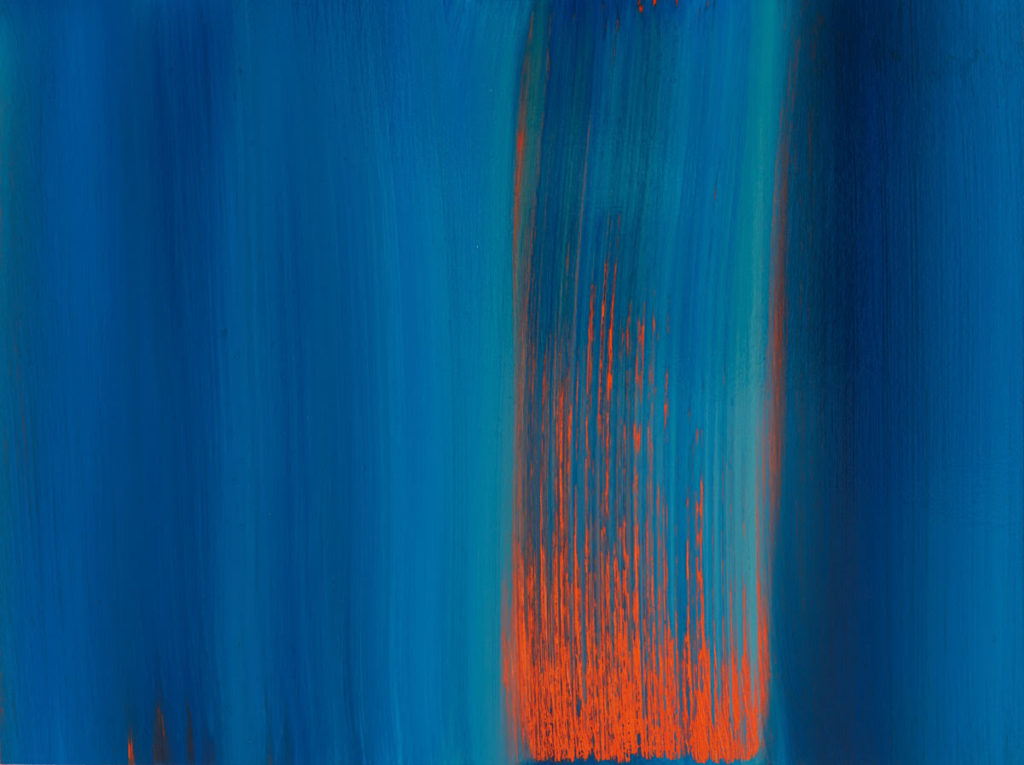
How did you come upon this way of working?
When I was in graduate school in New York, those “in the know” had declared, “painting is dead.” That of course turned out to not be true, but it was a springboard to question why make paintings when we have access to new forms, new media and live in a post-modern society. I found myself not chasing current trends, but instead found meaning in looking for underlying currents of value to humans forty thousand years ago and still relevant today. What is the opposite of trendy? I found a loadstone of sorts, and it’s as simple as finding true north, or one’s own heartbeat.
And just painting on the vertical?
In 1998 I had an “aha” moment when viewing Robert Irwin’s large scrim installation titled Prologue: x 18³ at the Dia Center on 22nd street. What blew me away, was Irwin’s comprehension and ability to point to space. Looking at the stars with wonderment is both ancient and modern, and Irwin was able to hold my attention with this liminal wonderment. So I asked myself if painting could be a vehicle to do the same. Painting isn’t dead and never will be so long as we are human. Painting as a medium still takes root in our historic pre-verbal psyche. We cover this ancient foundation of communication with signs and signifiers and verbal abstraction, but it remains a foundation. Painting can communicate on the same level as a feeling one gets when walking into a cave or chapel, and it’s not a coincidence this is where paintings were to be found throughout human history.
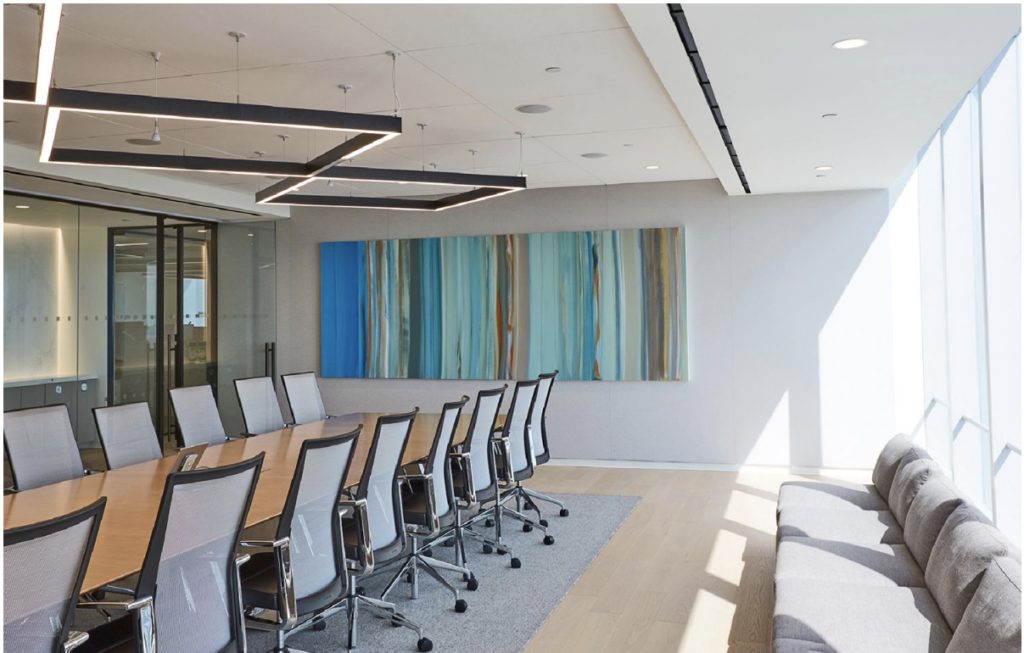
I was in the middle of my thesis at the time, so I scratched what I was doing, and set out to see if I could influence space. This began with looking at the proportions of the canvases and by a stroke of sheer luck or happy accident I used vertical strokes as a measuring device. There was something in there for me – a great mystery that pointed directly to a dream and vision, and I followed it, simply one step at a time. The painting medium has taught me to trust the path even though I don’t know what’s next.
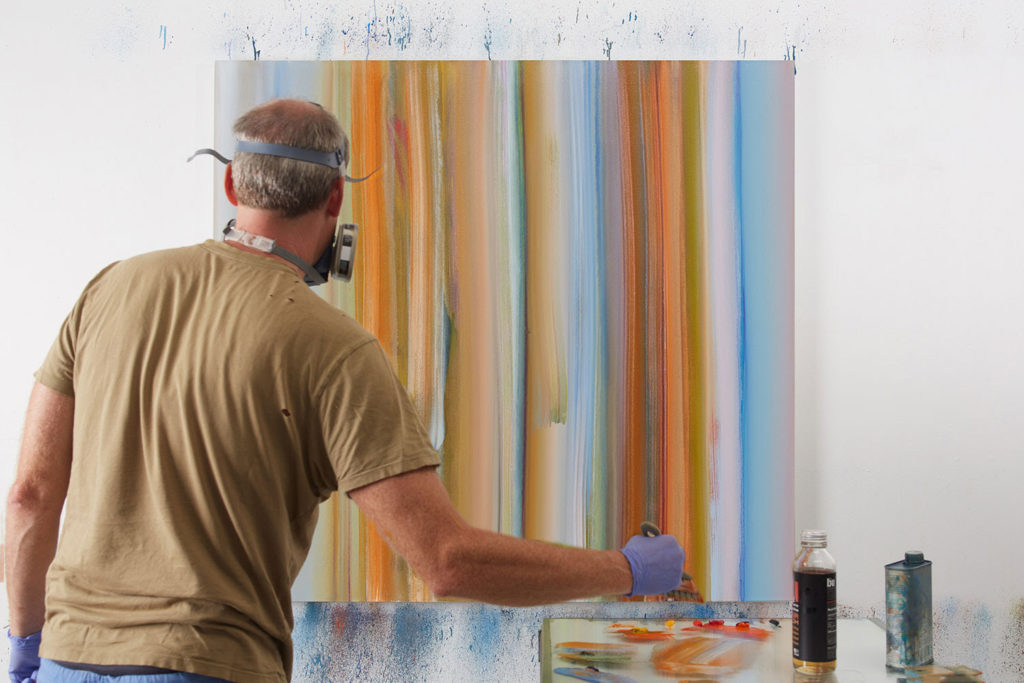
What inspires you most about living here and how does that affect your work?
I was afraid when I moved from New York that I would get comfy and my art would diminish. I like to surround myself with people and I need dialogue. It’s true that the expansive skies of New Mexico inspire me, but I also need to see good art and have meaningful conversations. Not surprisingly, New Mexico attracts like-minded friends with surplus and a lot of experiences. I find myself having studio visits with museum level artists, and people from fascinating facets of society that pass through or live here.
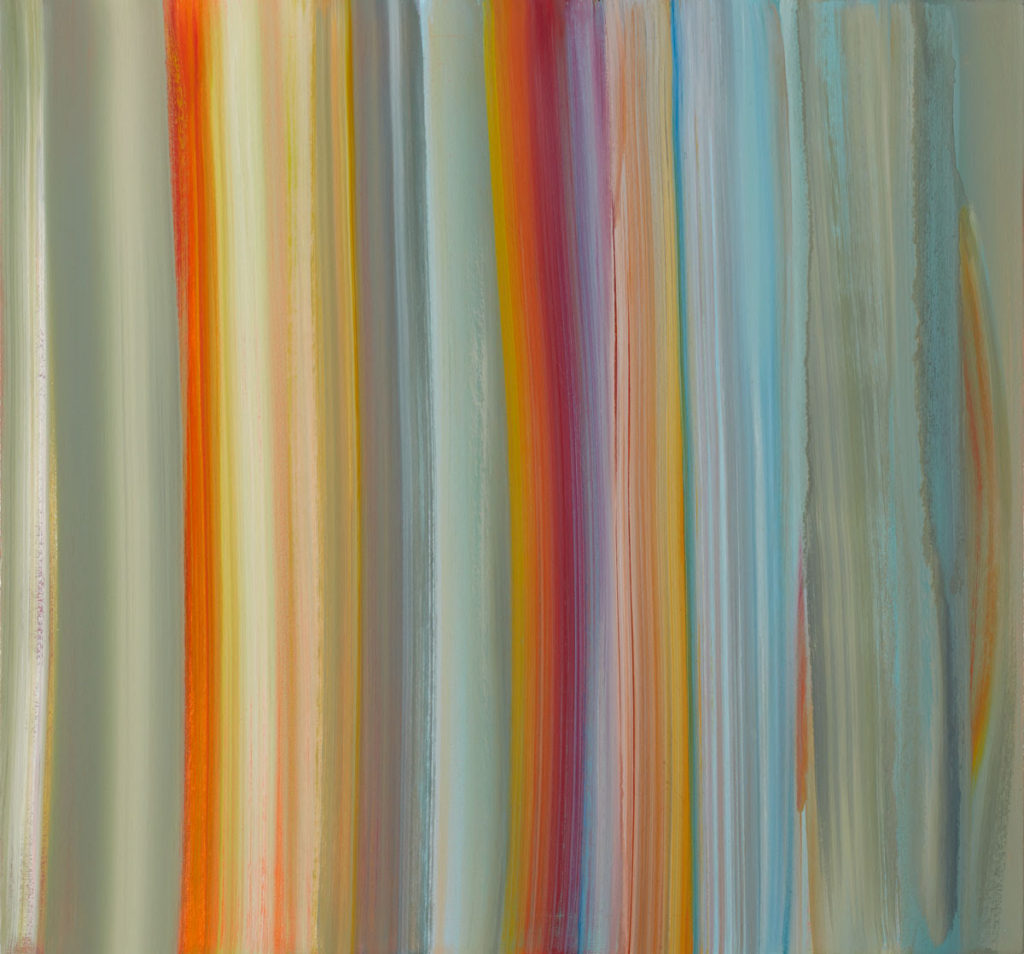
As a native son, what makes it special here?
Santa Fe in the 70s and 80s was a small town. Every road I lived on was a dirt road… even in town. I used to play in the old orchard off Palace Ave before it was a development. We used to catch Tiger salamanders in a small reservoir up on a hill above La Vereda, which is now also developed. There were a lot of adventures, but it was mostly a boring town. There wasn’t a lot to do. When I got into skate boarding I wished we had sidewalks. Now that I have a daughter, I see what great treasures that kind of boredom creates for children.
We didn’t think that we were lucky to be here or that it was that special. It was only when I left for college that I understood how the rest of the world felt about Santa Fe. I assumed the rest of America lived as I did, except that they had paved roads, sidewalks and more people. When I moved away, I knew exactly what my high school history teacher meant when he said, “you have no idea how lucky you are.”
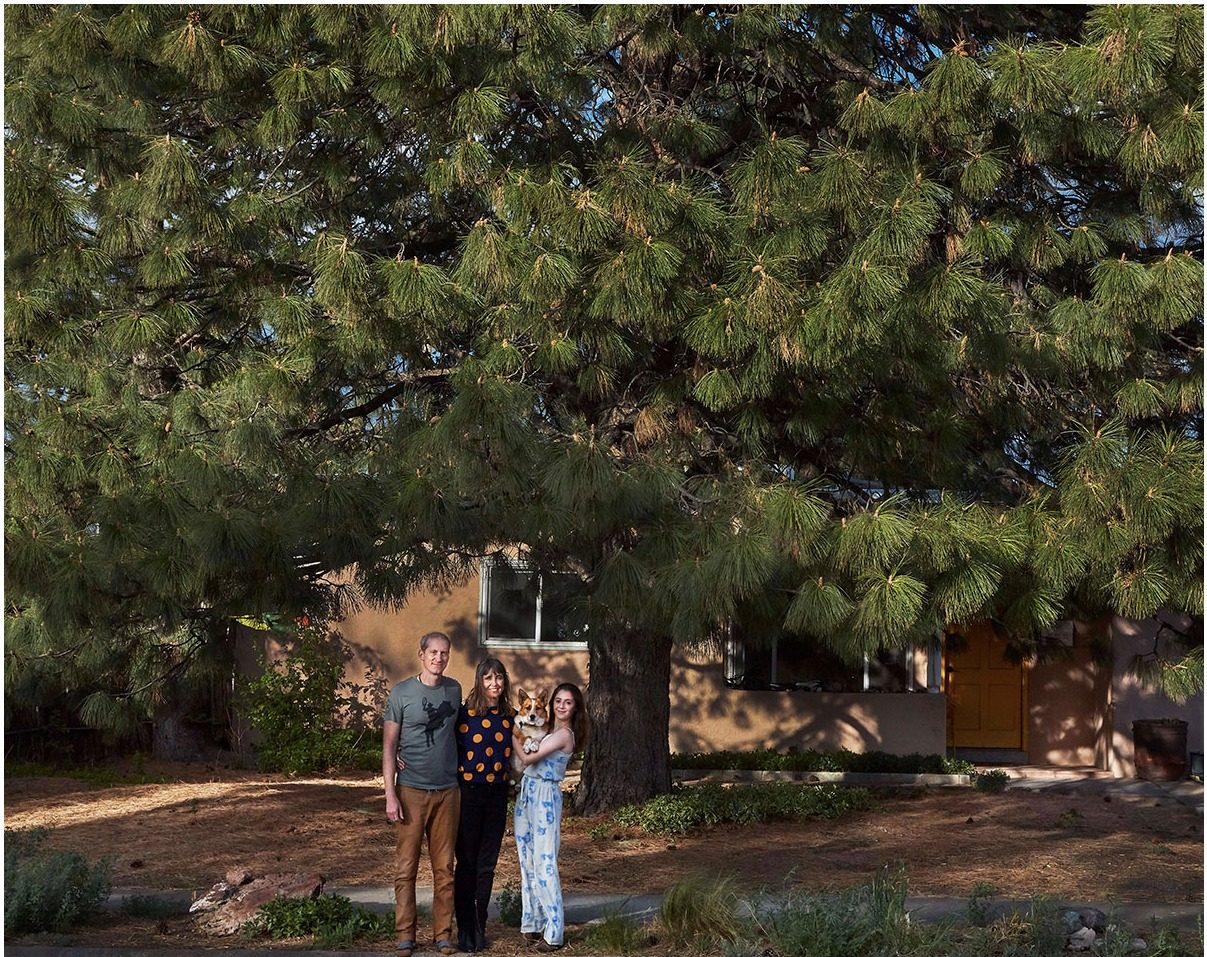
How can people find you and your work?
My work is represented by Nüart Gallery in Santa Fe, Richard Levy gallery in Albuquerque, Skot Foreman Gallery in San Miguel de Allende Mexico, and ClampArt in New York City. There is currently a lot of excitement around online exhibitions and auctions, but I am crave analog experiences and find them to be rich and meaningful.
By the way, my wife Kim Richardson has 3 photographs at the current exhibition “Breath Taking” at the New Mexico Museum of Art, up through Sept 5th. It’s a wonderful show.
Portrait of the Artist: Thank you Willy Bo Richardson!
Original article found in Santa Fe Art Studio profile:
Portrait of the Artist
